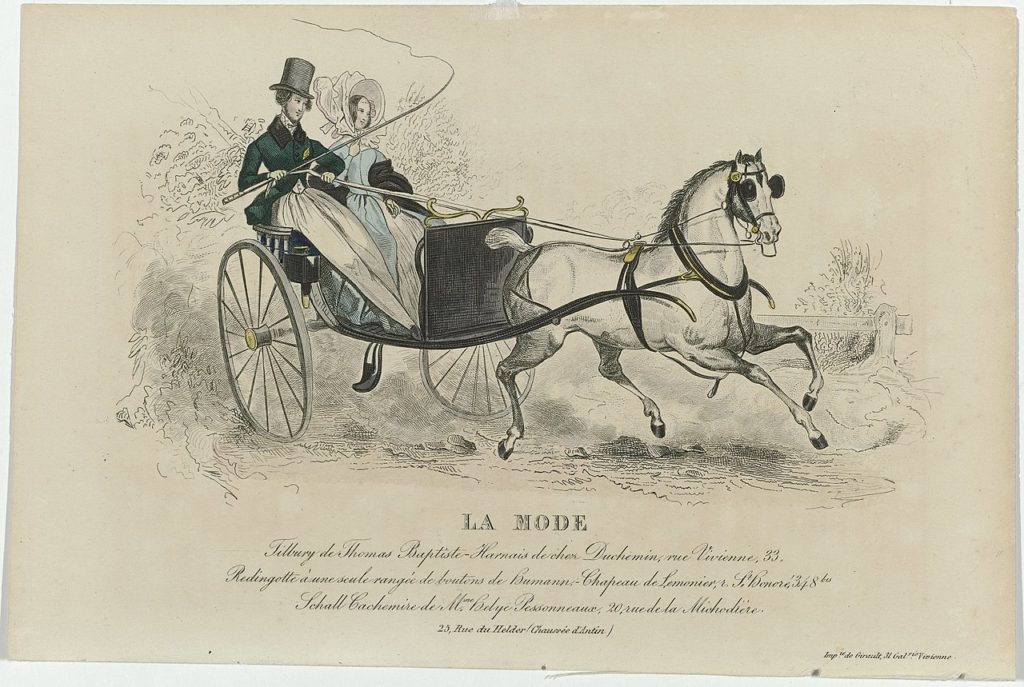
The tilbury carriage (a light, open, two wheeled carriage with or without a top) was named for its maker, the London firm Tilbury. Their coachbuilding facilities were in Mount Street.
The Tilbury Firm also created the Stanhope carriage, named after the carriage designer Fitzroy Stanhope. Both the tilbury and Stanhope were variations of the gig. The popularity of these gig type vehicles was mainly owing to the increased sport of driving by fashionable young men (The Carriage Journal, Vol 28, 1990).
Tilbury, described as a “young wheelwright and carriage builder”, whose workshop was originally on Edgeware Road, originally did carriage work and also kept buggy horses for daily hire. After teaming up with one of the most highly respected gentlemen coachmen of the era, Honourable Fitzroy Stanhope, the two first launched the Stanhope and then the Tibury which “enjoyed a run of popularity among young bloods” (The Carriage Journal, Vol 28, 1990). With that, Tilbury’s business took off, and he moved to South Street where he was able to also set up a stable of hunters for hire and gig and buggy horses.
Tilbury’s reputation continued to grow so that he would eventually become one of the leading hunter dealers in the country and his place of business would eventually move to the more fashionable Mount Street.
Tilbury was also the inventor of the Demi Mail Phaeton:











Fascinating. When did they start making them?
The first Stanhope gig was built around 1815 with the Tilbury to follow by about 1820.
Thank you. My Earl will have to find another gig in 1806. John